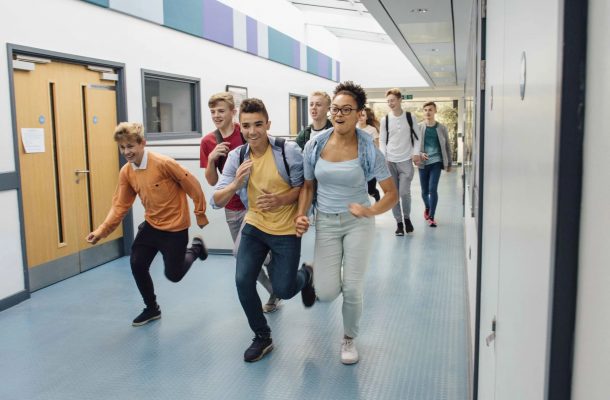Helping impatient students stay in school

Keeping young people in school is a key element in addressing inequality. Completing school is a minimum requirement for many jobs, as well as necessary for getting access to most types of training and university courses.
But in Australia around 15 per cent of students drop out before completing Year 12, leaving them vulnerable to a range of poorer outcomes later in life, like unemployment or under-employment, public welfare dependency and even poor health.
Our research investigates some of the influences that affect high school completion, and it’s a particularly surprising factor that has one of the strongest impacts – patience.In fact, our findings show that patience has an extremely significant impact on educational outcomes in children.
The impact of impatience
As part of the study, we measured students’ discount rates, which represents levels of impatience. The higher the discount rate, the less a person is willing to wait.
To measure these discount rates, we asked 878 children in a rural and suburban school district in the state of Georgia in the United States, to make choices between receiving a fixed amount of money in one month or a larger amount of money in seven months.
Although our study focused on school children in the US, our findings can be applied to most developed countries including Australia.
We tested whether these discount rates predicted on-time high school graduation up to five years later.
The results showed that a more impatient child is far less likely to graduate from high school, even controlling for other factors like academic achievement, behavioural problems, risk attitudes, demographics, household environment and parents’ characteristics.
Diving deeper, we found the effect of impatience on educational outcomes was also dependent on academic achievement.Interestingly, children who perform well academically are largely unaffected by their impatience; but it’s the students who are struggling with school who are far less likely to graduate.Patience matters the most for these ‘at risk’ children, and they would benefit considerably from the targeted educational incentives and monitoring practices.
Australian policy implications
Alarmingly, our research shows that children’s preferences affect whether or not they finish high school. This means that something is failing.
These kids, or those around them, don’t have the tools to deal with or manage impatience, which is getting in the way of them achieving an important educational milestone.
Nonetheless, in our sample, there were some impatient children that completed high school, suggesting there are strategies used by parents, students or the school system that can help. What these are and why they work aren’t well understood.
If there were clear answers, we wouldn’t be facing this problem.
Our experience in discussions with teachers and principals suggests they are acutely aware of behavioural problems, however, they are often poorly resourced to counteract them.Does our study imply that schools should cater to the different predispositions of kids? And if so, what exactly should schools do?While our findings suggest some possible strategies to consider, they also caution us from reaching grand recommendations too quickly.
Investing in learning
An obvious point to highlight is that children of different socio-economic backgrounds face different incentives. Relatively more affluent families might have the means to encourage their children to invest in learning and lower the costs of learning.
Poorer families, on the other hand, might have neither. For kids from disadvantaged backgrounds, personal traits might have a larger hand in their destiny.
If these are important components of the problem, it would be ill-advised to expect schools to substitute for the lack of resources at home or opportunities outside of school.
Impatience heightens the appeal of immediate consumption, such as earning (and spending) money.A clear example of larger forces at play outside the scope of schools is the recently reported decrease in high school graduation in areas experiencing a lucrative boom in oil and gas fracking in the United States.But while schools can’t change market conditions, they can work to change the relative costs of continuing to invest in learning. As our research shows, this is especially important for children already behind in their education.
This might be particularly challenging for schools with fewer resources. These schools face tighter budgets and may also need to compensate for larger learning deficiencies across students.
It is too early to know what works best since no systematic assessment yet exists of the approaches to help children with different behavioural tendencies.
But options might include offering strategies to help children cope or providing commitment action plans to help kids govern their impatience. Teaching strategies could also be identified that help develop a child’s non-cognitive skills like conscientiousness, perseverance and attention.
Every child faces different barriers to learning. This might be having access to education materials or to a quiet space to work, or even something as simple as who they sit beside.
In other cases, it may be that parents are stretched thin and don’t have a lot of time to spend with a child who needs extra support. But there might be ways to further reduce these learning costs.If we were to hazard a policy recommendation, it would be to leverage the wealth of data currently available in different state educational systems to get a better picture of a child’s learning journey and make progress on these important questions.
This article was written by Professor Marco Castillo and Professor Ragan Petrie of the University of Melbourne and published by Pursuit.
Professor Ragan Petrie is an academic at the Melbourne Institute of Applied Economic and Social Research. Her interests include behavioral and experimental economics, charitable giving and the economics of education, labour and public services.












